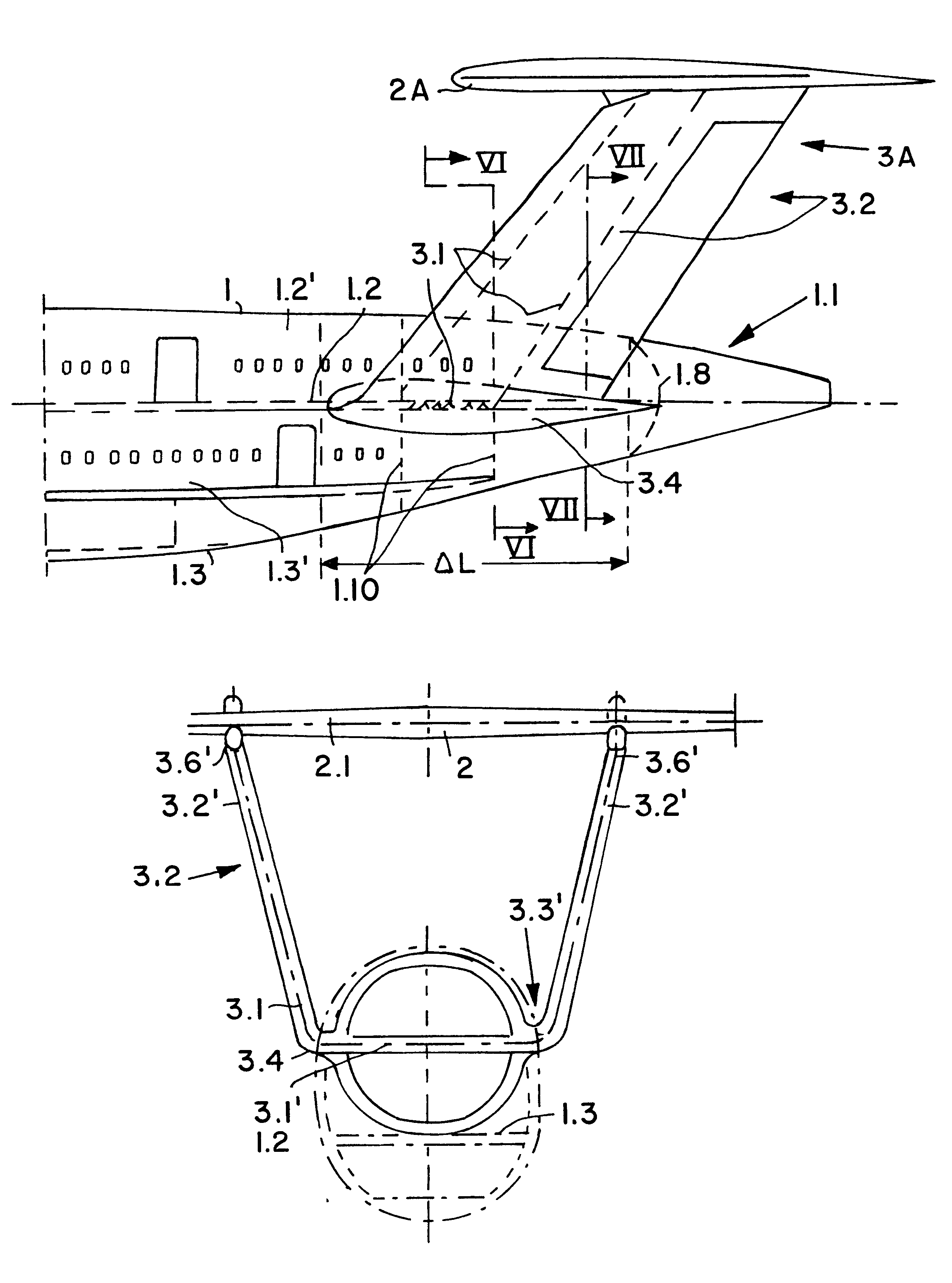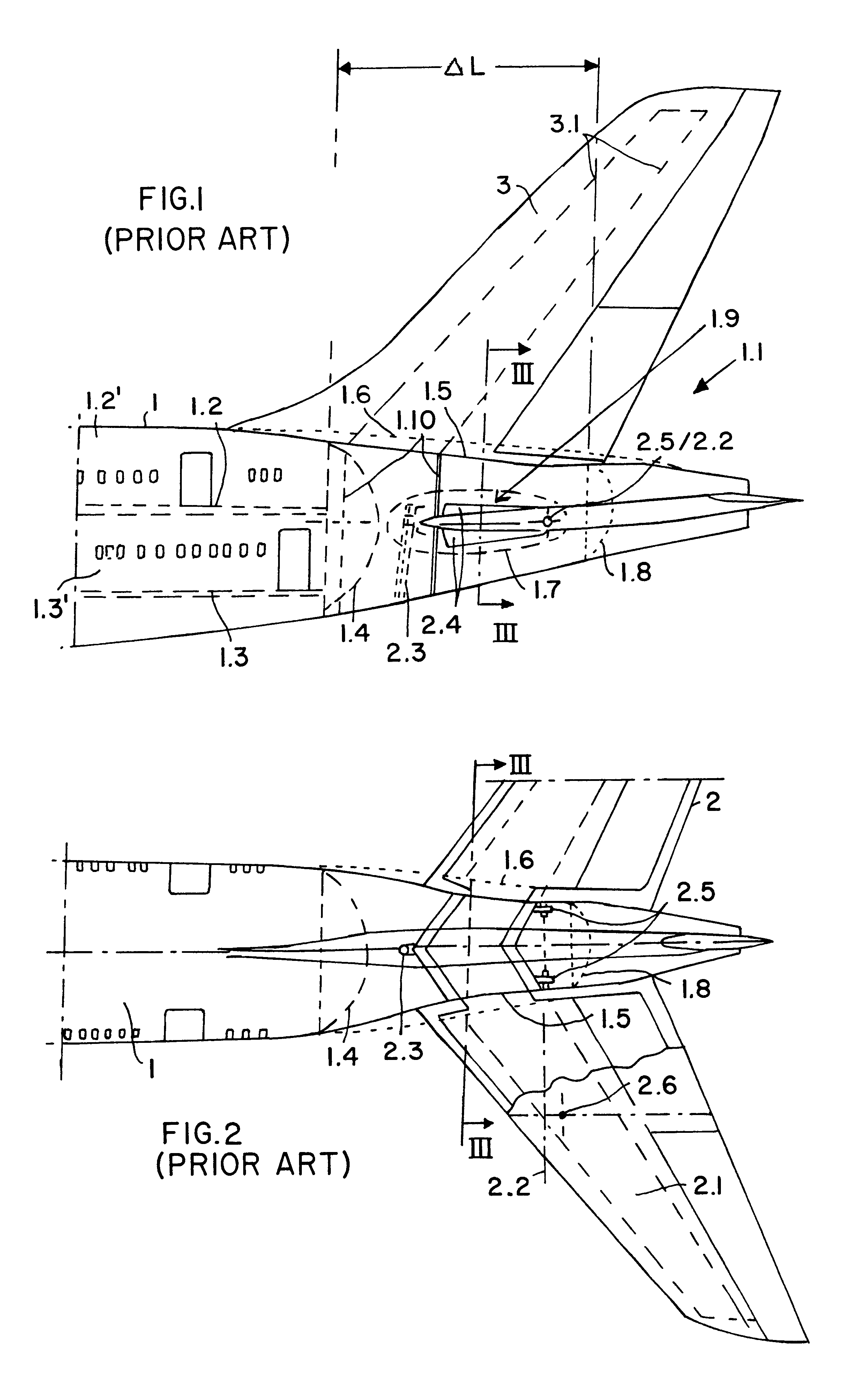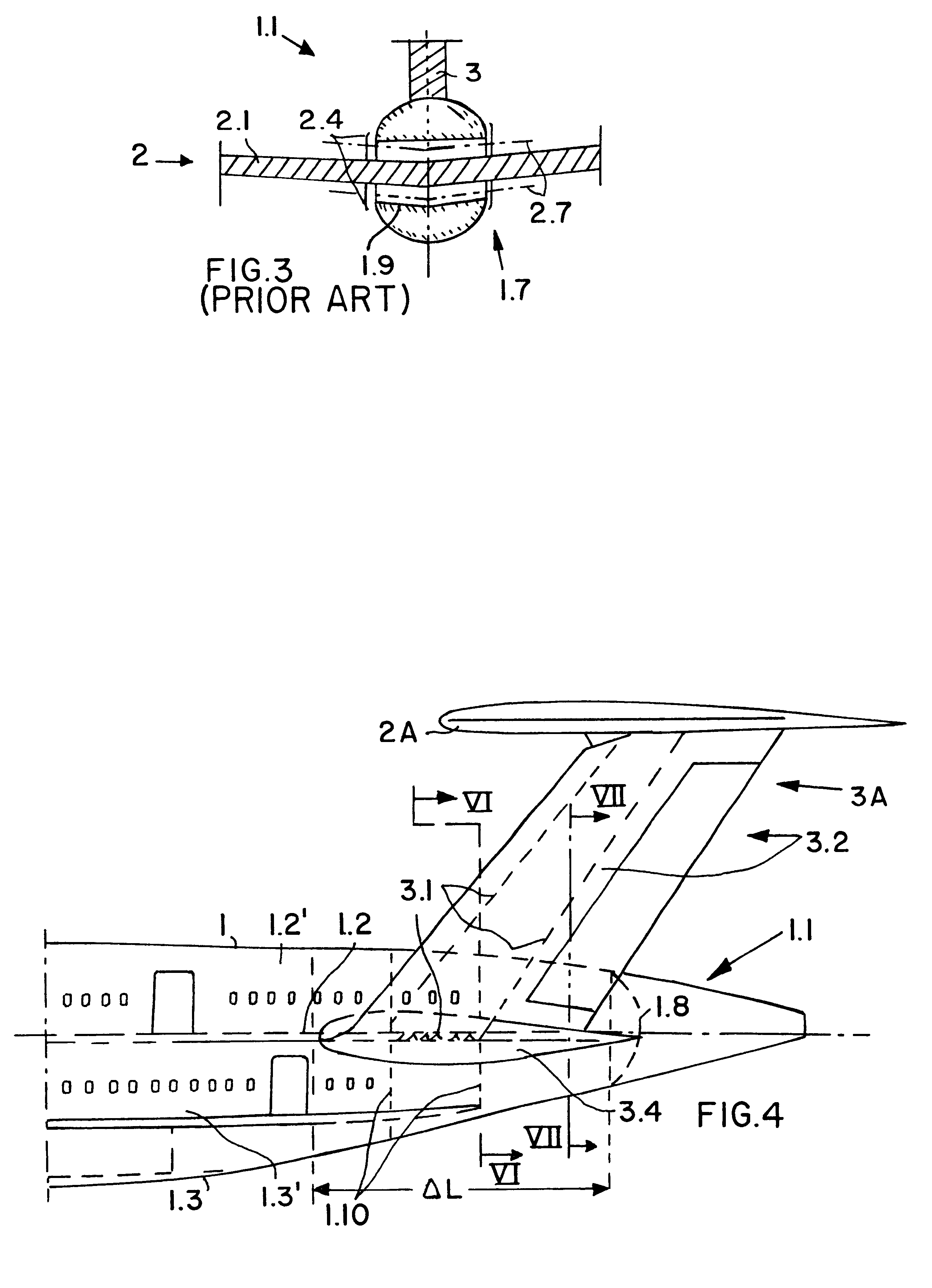Aircraft with a double-T tail assembly
a technology of rudder and tail section, which is applied in the direction of wings, automatic actuation, aircraft floors, etc., can solve the problems of difficult to provide double rudder assemblies that extend difficult to use on commercial aircraft, and the possibility of extending double rudder assemblies from the tail section of the fuselage is hardly feasible in commercial aircraft. , to achieve the effect of reducing the cross-section of the tail section, reducing the size of th
- Summary
- Abstract
- Description
- Claims
- Application Information
AI Technical Summary
Benefits of technology
Problems solved by technology
Method used
Image
Examples
Embodiment Construction
FIGS. 1, 2 and 3 show a portion of a fuselage 1 of a conventional, large capacity commercial aircraft having two passenger decks. The fuselage 1 has an upper deck 1.2 and a main deck 1.3 and a conical-shaped tail section 1.1. A fin and rudder assembly 3 and a tailplane and elevator assembly 2 are attached to the tail section 1.1. A tailplane torsion box 2.1 of the tailplane assembly 2 extends crosswise through the tail section 1.1, preventing this space in the tail section 1.1 from being used as passenger cabin space. In this conventional type of construction, the forces from the fin and rudder assembly 3 are transmitted by a fin torsion box 3.1 to rudder connecting ribs 1.10. These ribs further limit the space that is available for use as passenger cabin space. As a result, a large portion of the space in the tail section 1.1 cannot be used productively as passenger cabin space for the upper deck 1.2 or the main deck 1.3. A pressure bulkhead 1.4 forms the rear closure of the cabins...
PUM
 Login to View More
Login to View More Abstract
Description
Claims
Application Information
 Login to View More
Login to View More - R&D
- Intellectual Property
- Life Sciences
- Materials
- Tech Scout
- Unparalleled Data Quality
- Higher Quality Content
- 60% Fewer Hallucinations
Browse by: Latest US Patents, China's latest patents, Technical Efficacy Thesaurus, Application Domain, Technology Topic, Popular Technical Reports.
© 2025 PatSnap. All rights reserved.Legal|Privacy policy|Modern Slavery Act Transparency Statement|Sitemap|About US| Contact US: help@patsnap.com



